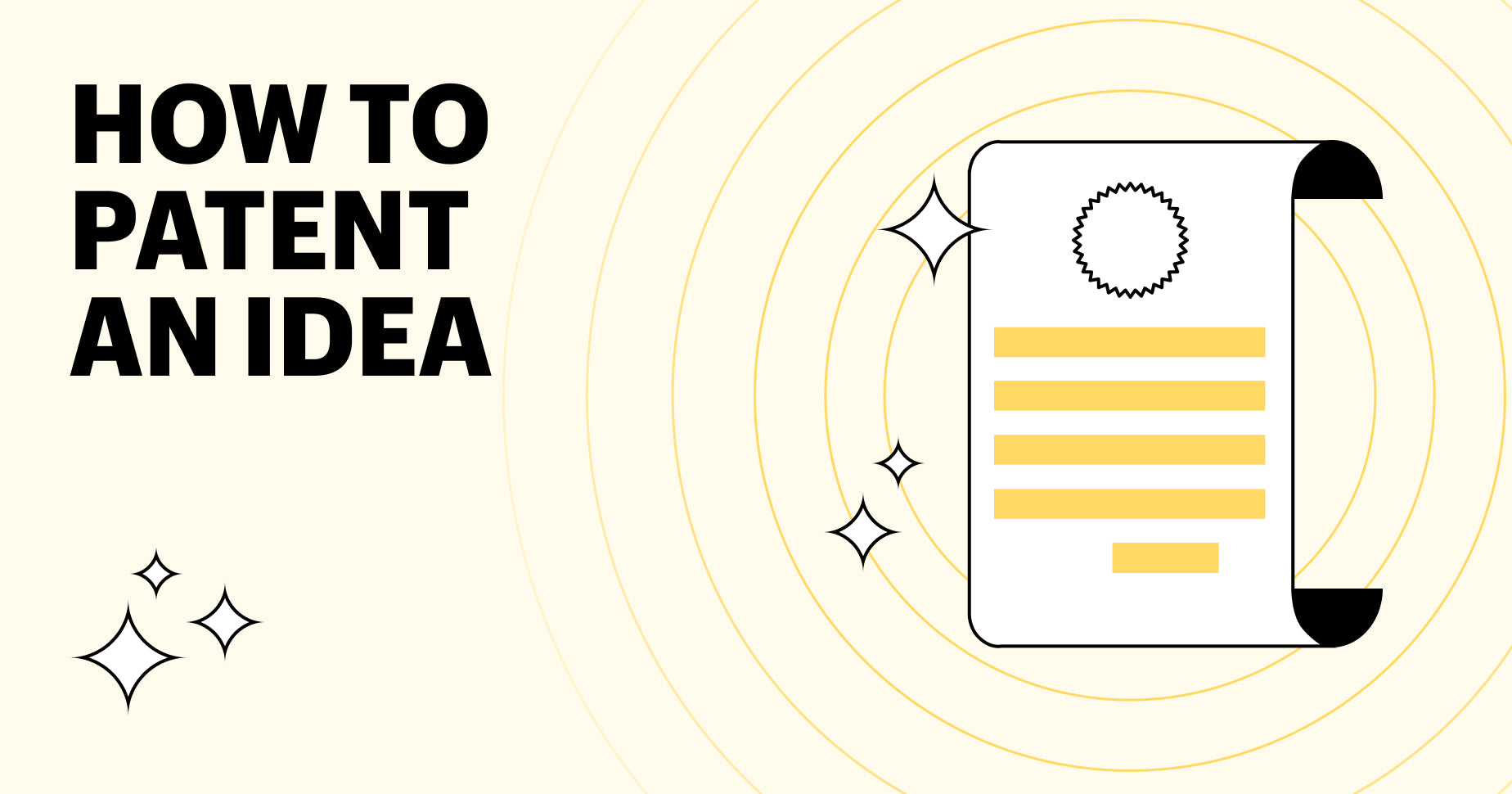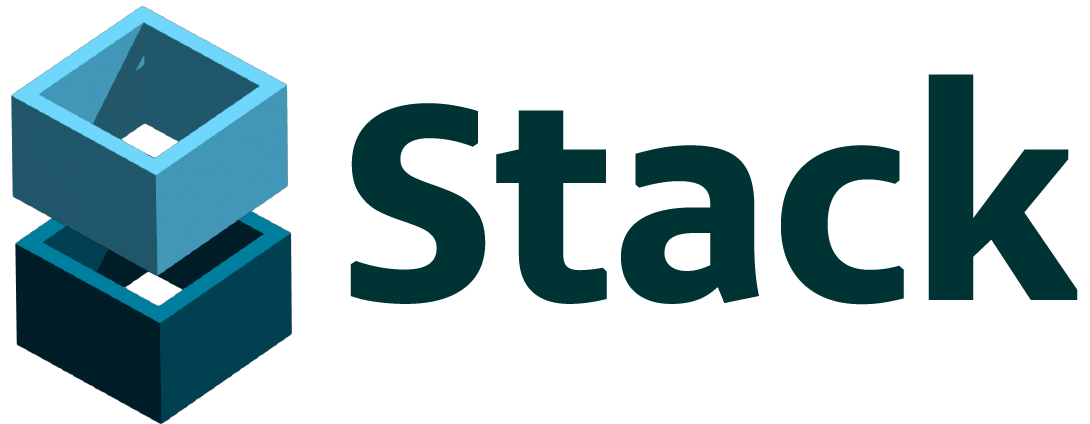Our view at Stack - Shopify has just about everything you need if you're looking to sell online. It excels with unlimited products, user-friendly setup, and 24/7 support. It offers 6,000+ app integrations, abandoned cart recovery, and shipping discounts up to 88%. Plus, it allows selling both online and in-person, scaling as your business grows.

Say you’ve started a business to sell an ingenious invention of your own design, or you’re working on that million-dollar idea. You know no one has ever devised a product like this before—and you also know that the second it hits the market, copycats will start making knockoffs of your hard work. This is where patents can come in to save your business idea.
But that’s not to say patents can guarantee protection from copycats. Take Bitten Design, for example. “We own the worldwide patent for the mustache pacifier, but if you go and look on the internet and type in ‘mustache pacifier,’ there’s a load of copies,” says Al Cuttell, Bitten Design co-founder. The Bitten team believes that legally stopping the dozens of companies copying their products isn’t possible.
“We don’t want to spend time in such a negative way,” Al says. “We look at other companies who copy our products and sometimes it’s actually quite nice, because you realize that you’ve done something good that other people want.”
In spite of these challenges, a patent is still the most powerful tool for protecting intellectual property in the US. This article will walk you through the steps of successfully compiling a satisfactory application for patent recognition.
What is a patent?
A patent is a legal tool enshrined in the US Constitution for the purpose of protecting intellectual property. Specifically, a patent is a document that declares ownership of an invention, much as a deed proves ownership of a piece of real estate.
I recommend that entrepreneurs appreciate the value of copyrights, trademarks, design patents, over the value of a utility patent when it comes to enforcing and protecting their actual products; really invest in that.
How do patents work?
Patents are issued by the United States Patent and Trademark Office (USPTO) in exchange for the necessary registration fees, and issuance grants the patent holder “exclusive rights.”
Exclusive rights allow the patent holder to “exclude others from making, using, offering for sale, or selling” the invention covered by the patent domestically, or importing the invention from overseas. The USPTO, while acting as a central clearinghouse for patent and trademark information, does not enforce patent rights. Those rights are enforced through the civil court system.
Despite the protection a patent is meant to provide, infringement is a common challenge. A patent infringement happens when a third party makes, uses, sells, or imports a patented invention without the permission of the patent holder.
Patent holders need to be prepared to enforce their rights through the legal system, which might involve litigation to get compensation or stop further infringements.
How to get a patent in 8 steps
Applying for a patent is one of the more complicated processes for protecting your intellectual property. Although it is possible to do it on your own, you may want to consult a patent attorney to help you prepare and submit the filing.
1. Determine if patent protection is appropriate.
If you are looking to protect a creative work, you should seek a copyright; for brand names, logos, or slogans, you should apply for trademarks. If you want to protect an invention, a physical product, or a design, patent protection is the right route.
2. Determine if your invention is patentable
To be patentable, an invention must be:
- Patentable subject matter. Under Section 101 of the US Code, “patentable subject matter” includes any “process, machine, manufacture, or composition of matter” or “any new and useful improvement thereof.”
- Useful. A patent’s usefulness is rather easily proved—it must offer some functional purpose.
- Novel. A patent is not novel if it was known to the public before the applicant filed the patent.
- Non-obvious. A patent is non-obvious if inventing it required some advanced skill that an ordinary person couldn’t replicate.
3. Conduct a patent search
Make sure your invention is sufficiently novel by investigating whether anyone else has a similar existing patent. You can run a search through the USPTO online.
4. Determine what kind of patent you need
Do you need to file a utility patent application, or one for a design or a plant patent?
5. Prepare to submit your application
You should review the USPTO’s catalog of various patent registration fees, as well as timelines for having your application examined. At this stage, after ascertaining the complexity of your application, consider hiring a patent lawyer.
6. Submit your application
You can use EFS-Web, the USPTO’s electronic filing system to file your patent application online. Your application must contain all required parts (see the list below) and the appropriate fee. You can file either a regular patent application (RPA) or a provisional patent application (PPA). A PPA allows you to claim “patent pending” status for your invention, and it is subsequently less complex than applying for an RPA. An RPA entails the full patent examination process, explored below.
7. Work with your patent examiner
If your application is incomplete, you will be notified by the patent office by mail of what’s missing. You will have a limited period, depending on the deficiency, to update your application. If the omission isn’t corrected, your application will be denied and returned to you. If the application is accepted as complete, it will be assigned to an examiner, who will review it to determine whether it meets the legal requirements of patentability. You will have opportunities to amend your application if the examiner finds you have failed to meet legal standards. After two rejections, you may appeal the examiner’s decision to the Patent Trial and Appeal Board (PTAB).
8. Get approved and pay final fees
If the examiner determines your application is satisfactory, you will receive a Notice of Allowance from the USPTO. You must then pay an issue fee, and possibly a publication fee before the patent finally is issued.
3 types of patents
- Utility patent
- Design patent
- Plant patent
Patents fall into three main categories.
- Utility patent: Utility patents protect anyone who develops any new “useful process, machine, article of manufacturing, or composition of matter, or any new and useful improvement thereof,” according to the USPTO. This concerns inventions in the traditional sense: new gizmos, gadgets, materials, etc.
- Design patent: Design patents are granted to anyone who invents a “new, original, ornamental design for an article of manufacture.” This includes specifications for pieces of clothing, furniture, or consumer products.
- Plant patent: Plant patents are granted to anyone who invents and “asexually reproduces” any new variety of plant life. Asexual reproduction means the plant is produced in some way other than through the germination of seeds—such as cutting or grafting.
David Barnett, inventor and founder of PopSockets, learned a lesson in design patents early on in his career. “I recommend that entrepreneurs appreciate the value of copyrights, trademarks, design patents, over the value of a utility patent when it comes to enforcing and protecting their actual products; really invest in that,” he says.
“Utility patents typically tend to be more valuable than design patents, but it turns out that when you’re enforcing your IP, when you’re trying to shut down factories that are making counterfeits, it’s much easier to use a design patent.”
Can you patent an idea?
Ideas are not patentable. US patent law holds that patents may only be granted on the physical manifestations of ideas—machines and products, but not the underlying ideas themselves.
Patent vs. copyright: Similarities and differences
Both patents and copyrights are legal tools for protecting intellectual property in the US. Although they both concern protecting products of imagination, they are distinct in what they are meant to cover.
How are they similar?
Patents and copyright are similar in that they are both devices of US federal law designed to protect intellectual property rights.
How are they different?
Copyrights and patents differ in the rights they are intended to protect. Copyright protects ownership rights in creative works (books, films, works of art, etc.) and patents protect ownership rights of inventions (machinery, consumer products, product designs, etc.).
Patent checklist
Depending on what you want to patent, and the type of patent you seek, your application should include:
- Patent description. A patent description should include a name for the invention, its purpose, its components or steps, how the components interact with each other, or how the steps are enacted. It also should include how to use the invention, descriptions to accompany any drawings, and the benefits or alternative uses for it.
- Patent drawings. Your application must include drawings or schematics, unless it is for a method, materials composition, or chemical compound. They should be clear and easy for a layperson to interpret. All views and angles must be captured by the drawings, and they should be sufficiently labeled with reference markings. Drawings can consist of line drawings, charts, photographs, computer-generated graphics, or hand illustrations.
- Inventor information. You must identify yourself and any co-inventors in your application. A co-inventor is anyone who contributed to the conception of your invention. It’s important to make these identifications to insulate yourself from any competing patent claims or lawsuits down the road.
How to patent an idea FAQ
How much does it cost to patent an idea?
USPTO registration fees can be as much as $900, depending on the type and scope of the patent. Examination fees are about $220 on top of that. If you use patent lawyers, the cost of patenting a relatively simple invention, such as a small consumer product or hand tool, is between $8,500 and $12,000.
What is the best way to patent an idea?
The best way to patent an invention you thought up is to hire a specialized attorney to guide you through the patent process. As an alternative, you can consult the USPTO’s guidance documents for preparing a successful application yourself.
Can you patent an idea yourself?
You can patent a product that is the result of an idea yourself, but not the idea itself. However, the patent application process is arduous and complex, and if you have the financial means, you may want to hire a patent attorney to assist you.
How long does a patent last?
A patent lasts 20 years, but you must pay maintenance fees at 3-, 3.5-, 7-, 7.5-, 11-, or 11.5-year intervals.
Is it hard to patent an idea?
Patenting is a demanding and time-consuming process. Because of the complications of the patent filing process, even for provisional patent applications, there are many opportunities for a filer to make mistakes or fail to include the required information. Preparing a USPTO patent application, therefore, requires great care and attention to detail, and advice from a legal expert.
If Shopify is of interest and you'd like more information, please do make contact or take a look in more detail here.
Credit: Original article published here.
